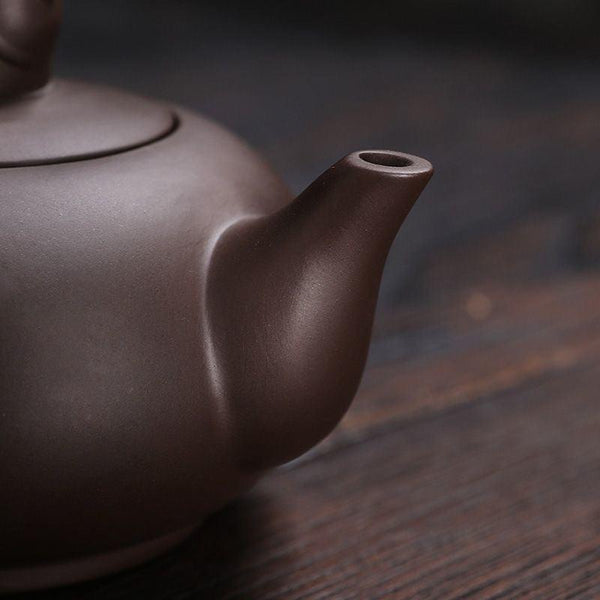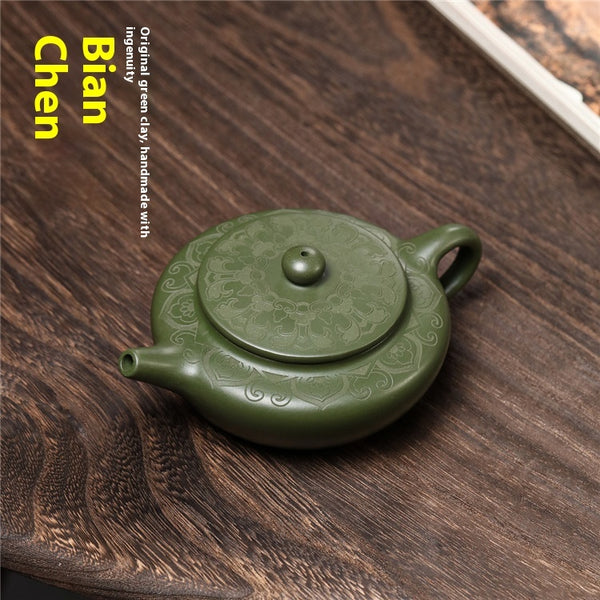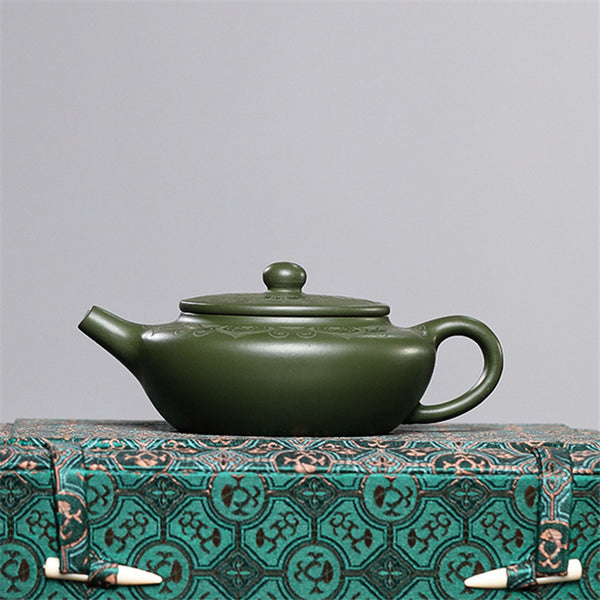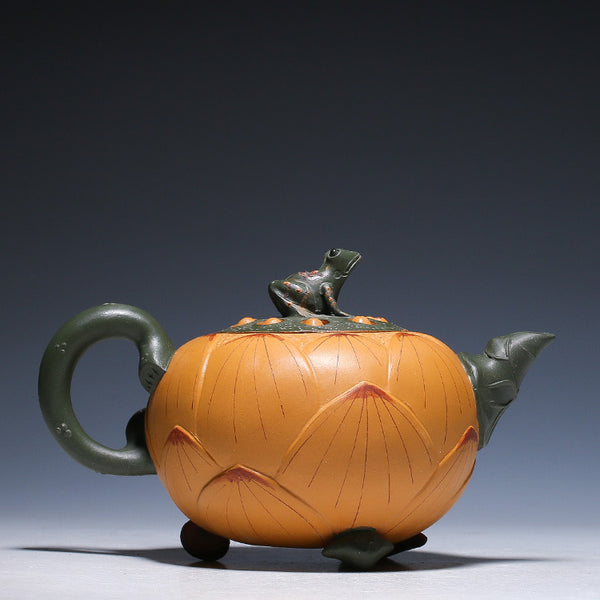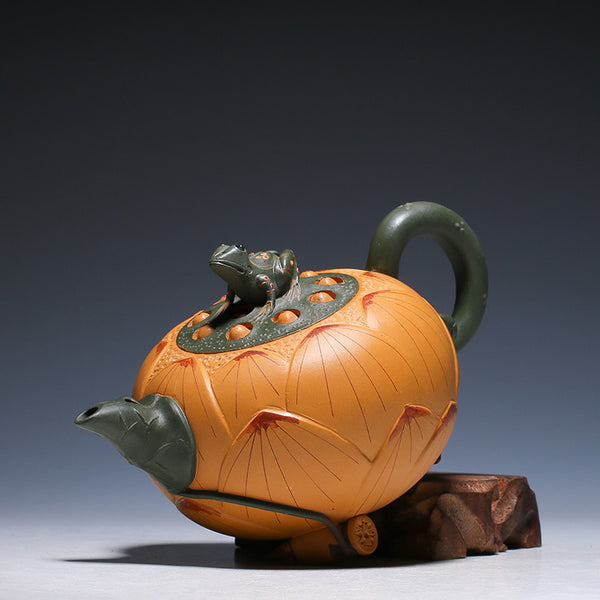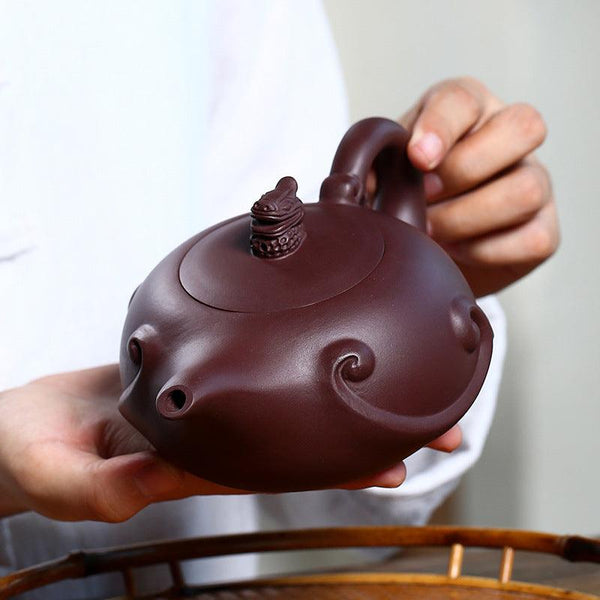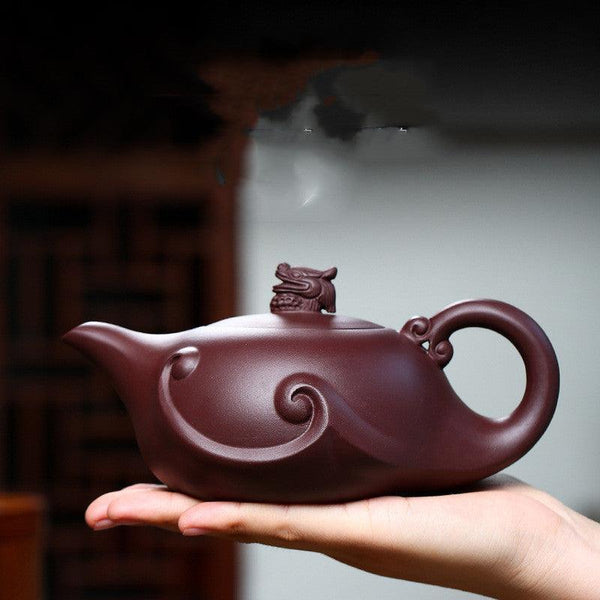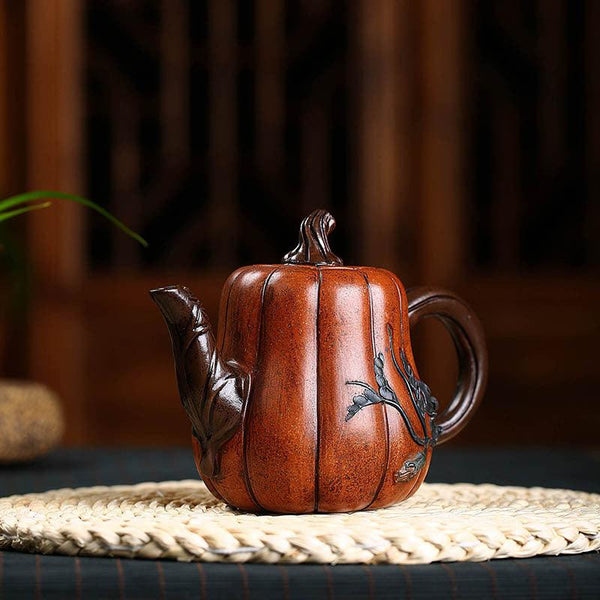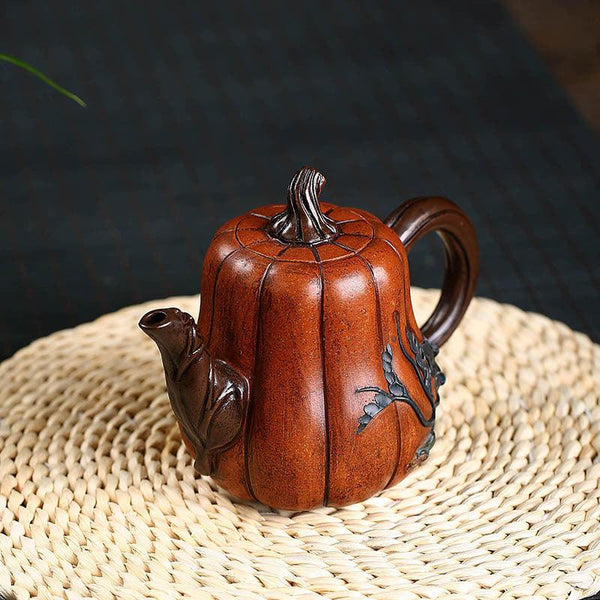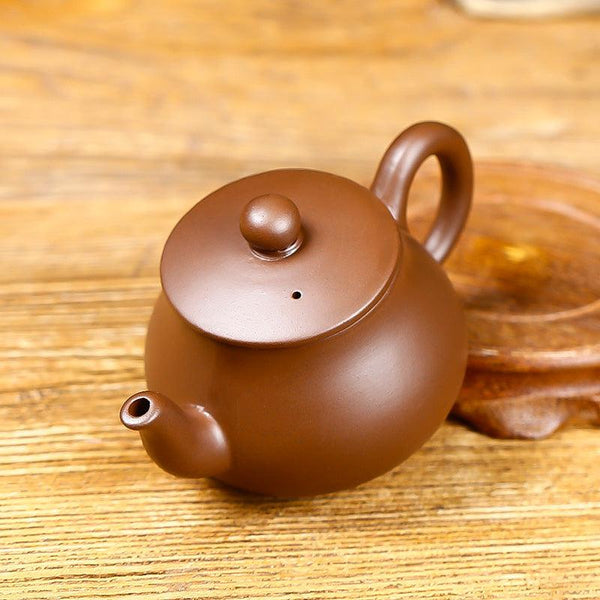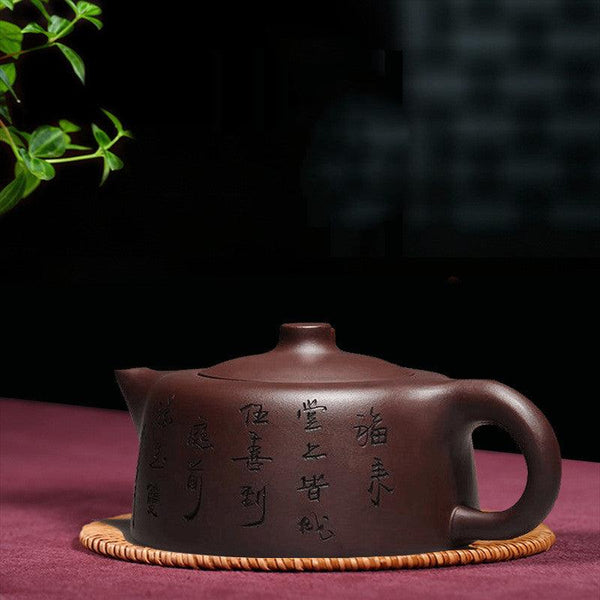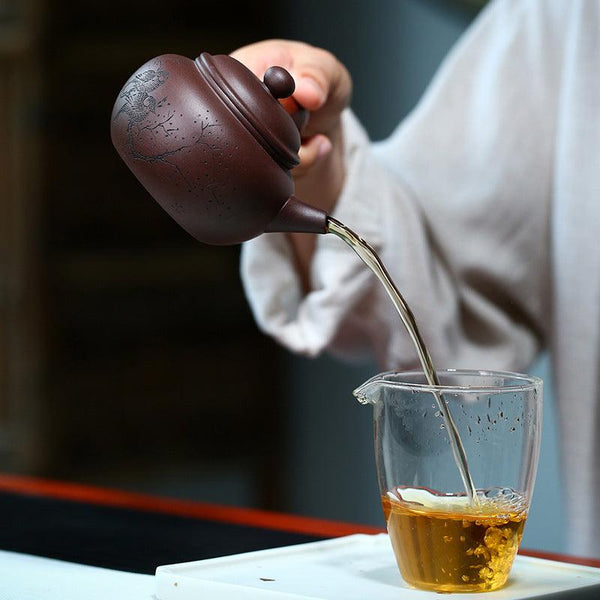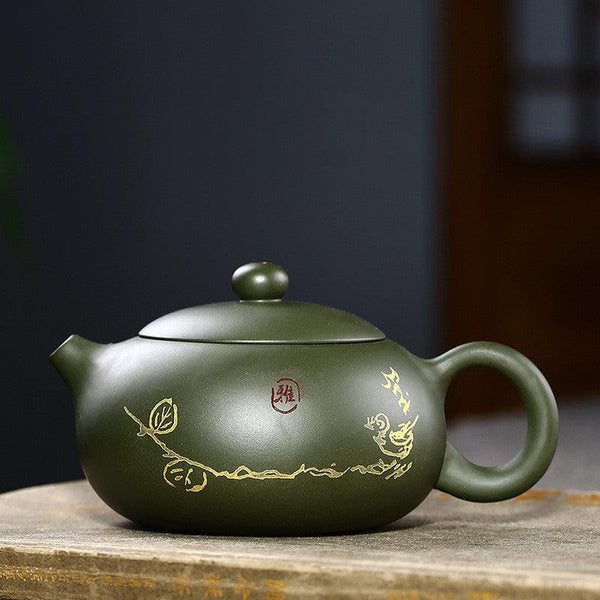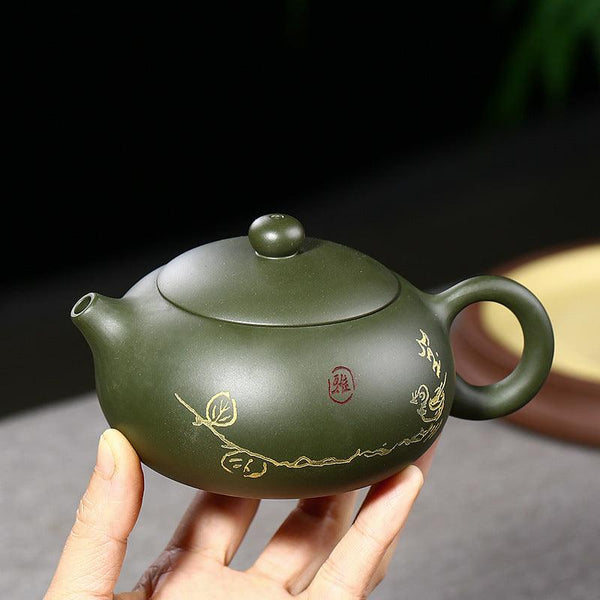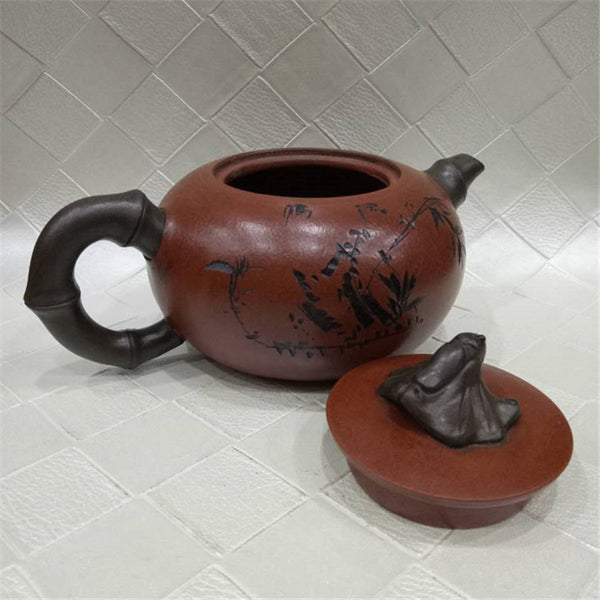Chinese teapots are much more than functional objects; they are symbols of culture, craftsmanship, and history. Selecting the right teapot can elevate your tea experience, whether you are a seasoned tea enthusiast or just beginning your journey into the world of Chinese tea. To help you navigate the vast array of options available, this guide will cover the key considerations to keep in mind when choosing a Chinese teapot, including sizing, the type of clay, clay color, shape, firing, and the aging of clay teapots. Additionally, we will explore how to brew tea with Chinese teapots for optimal results.
What to Consider When Choosing a Chinese Teapot
Sizing
When selecting a Chinese teapot, size is an important factor in determining how much tea you can brew. Teapots come in small, medium, and large sizes. Small teapots, holding 100-150 milliliters, are perfect for individuals or small, intimate tea sessions. Medium teapots, with a 200-300 milliliter capacity, are ideal for smaller gatherings, while large teapots, holding 500 milliliters or more, are suited for larger groups. Chinese tea culture emphasizes brewing multiple infusions, so even for larger groups, using a smaller teapot ensures that each infusion remains fresh and aromatic, enhancing the overall tea experience.
Type of Clay
One of the most significant factors in choosing a Chinese teapot is the type of clay from which it is made. The clay has a profound impact on the flavor of the tea, as well as the aesthetic appeal of the teapot.
Some common types of clay used in Chinese teapot making include:
Yixing clay teapots are prized for their porous nature, which allows them to absorb tea flavors over time. With repeated use, they develop a "patina" that enhances the aroma and taste, making them especially cherished by tea enthusiasts.
- Zisha Clay: A type of Yixing clay, Zisha clay is often used in the creation of traditional Yixing teapots. It is known for its fine texture and unique properties that improve the flavor of tea.
- Jingdezhen Clay: Another popular clay, Jingdezhen clay is widely known for its smooth, delicate texture and vibrant color. It's often used in decorative teapots, but it also retains heat well and provides excellent brewing results.
The type of clay you choose should be based on your preferences, the type of tea you enjoy, and whether you want a teapot that enhances or imparts specific flavors to the tea.
Clay Color
The color of the clay in Chinese teapots varies based on region and clay type. Yixing teapots are often earthy shades, ranging from red to purple, while Jingdezhen teapots can be lighter or even white. The color choice is a matter of personal preference, affecting both heat retention and visual appeal.
Shape
Chinese teapots come in a variety of shapes, each designed to suit a specific type of tea and brewing style. Traditional Chinese teapots often feature rounded or squat shapes with a wide base, which allows for better infusion and extraction of the tea’s flavors.
Some common shapes include:
- The Zisha Pot: A traditional and iconic shape that features a simple, functional design, perfect for brewing Oolong and Pu-erh tea.
- The Gaiwan: Although technically not a teapot, a gaiwan is a traditional Chinese vessel used for brewing tea. It consists of a lid, a bowl, and a saucer and is ideal for delicate teas like green tea.
- The Piao Pot: A more modern design with a narrower neck and spout, making it suitable for brewing fine teas like white or green teas.
Your choice of shape should depend on the type of tea you enjoy brewing most frequently and your personal aesthetic preferences.
Firing
The firing process plays a crucial role in the quality of a Chinese teapot. High-quality teapots are fired at high temperatures, enhancing durability and crack resistance. Handmade teapots fired in traditional kilns retain heat better, ensuring consistent temperature during brewing, which is key for optimal flavor extraction.
Aging of Clay Teapots
The aging process of a clay teapot adds unique character over time. As teapots absorb the essence of the teas brewed in them, they develop a distinctive patina, enhancing their appearance and texture. Older teapots refine the flavor of tea, and some tea enthusiasts use specific teapots for particular teas to improve quality. Beginners may want to start with a new teapot and build a collection as they explore this process.
Brew Tea with Chinese Teapots
Once you’ve chosen the right teapot, it’s time to put it to use. Brewing tea with a Chinese teapot requires a few key considerations for optimal results.
Start by rinsing the teapot with hot water to remove any dust and warm it up. Then, pay attention to the water temperature: green tea requires 75-80°C (170-180°F) water, while black tea needs 90-95°C (194-203°F). For the right balance, use 1-2 teaspoons of tea leaves per 150-200 milliliters of water. Chinese teas are often brewed in multiple infusions, with each release of flavor deepening as the leaves expand. Steep delicate teas like green or white tea for 1-2 minutes, and robust teas like oolong or pu-erh for 3-5 minutes.
By selecting the right teapot and following these brewing guidelines, you’ll be able to enjoy a flavorful and authentic tea experience each time. Happy brewing!



